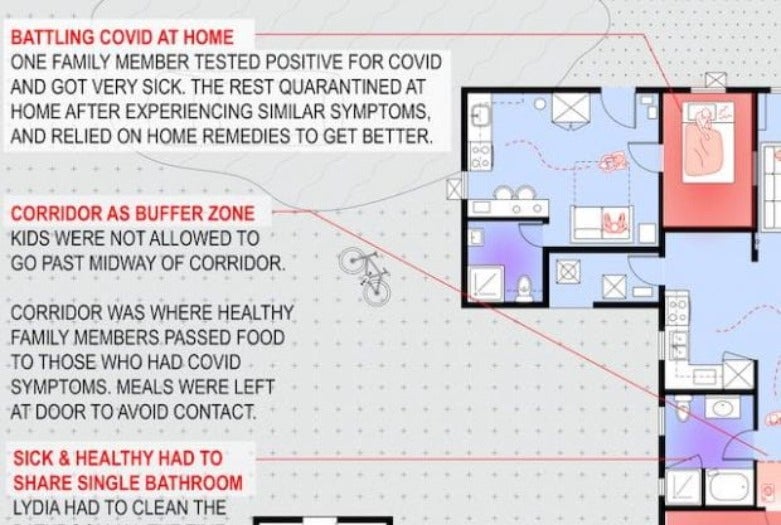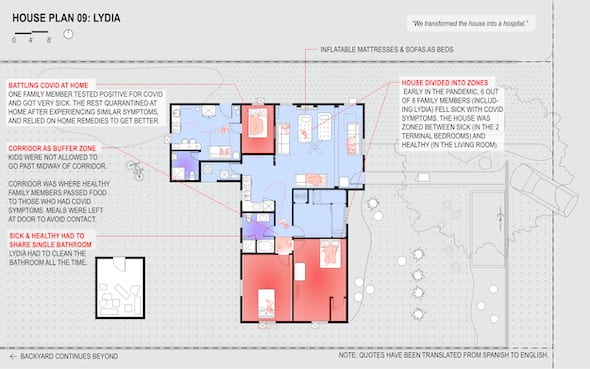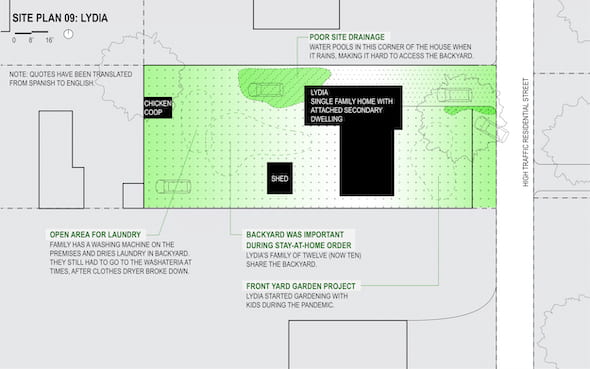Rice Architecture survey of Fifth Ward households details COVID-19 impact
Staying put during the pandemic is hard enough without additional stressors. But for some in Houston, COVID-19 exacerbated situations that already presented challenges.
A fellow at Rice University’s School of Architecture set out to document the pandemic’s effects on households through discussions with residents of Houston’s Fifth Ward for a pilot study, “Stay-at-Home Stress.”
Amelyn Ng, an Australian architect in her second and final year as a Rice Architecture Wortham Fellow, detailed the concerns of 16 households in the study’s findings, discussing the environmental, physical and personal stressors that are particularly hard on low-income families with children.
The study of families in both rental and occupant-owned properties was backed by a grant from Rice’s COVID-19 Research Fund, in line with the university’s Vision for the Second Century, Second Decade.
Ng noted Rice’s Kinder Institute for Urban Research “does amazing research on Houston conditions from the data point of view, really comprehensive studies. But I was looking for individual studies as a combination of qualitative and spatial information, using architectural tools, drawings and maps to understand the situation at the granular household level.
“Then we could relate that back to the broader question about the unevenness of the COVID experience,” she said.
Ng worked with the Center for Urban Transformation, a community-based organization in the Fifth Ward, to get in contact with volunteer residents who experienced stress during the pandemic. She and Rice Architecture graduate students Carrie Li and Carolyn Francis identified stressors in homes that required urgent mitigation, which stressors could be alleviated through spatial reorganization and which would likely persist beyond the pandemic.
The top stressor, heat, fits into that last category, according to Ng. She said 12 of the 16 participants reported heat stress during the summer, especially in kitchens and bedrooms, with 10 noting inadequate air conditioning as a problem.
Other -- but not all -- sources of stress included invading pests, the need to use nonbedroom spaces as bedrooms, the difficulty of accessing repair or installation services during lockdown and overcrowded homes, according to the study.
When asked to rate their overall pandemic-related stress on a 1-to-5 scale, half the participants were a most-stressed “5,” and all of those who responded “4” and “5” listed heat as a cause, Ng said.
The researchers didn’t set out to identify quantifiable trends so much as build a nuanced portrait of individual lives in a difficult situation. Taking the approach of architectural documentation, Ng and her team paid additional attention to the configurations of their homes and how that influenced their lives under lockdown.
The study offers a glimpse into the lived realities of participants, some of whom fell sick with COVID-19 and were quarantined, and some living in homes that were damaged by Hurricane Harvey. Several participants are essential health care workers.
The study also details many of the participants’ coping mechanisms, including receiving support from nearby family members, spending most of their time in the only air-conditioned spaces in their homes and using cellular hot spots so children could study.
Because of COVID-19’s persistence through 2020, Ng interviewed all of the participants remotely via video.
“This was the conundrum of the epidemic,” Ng said. “In-person interviews became impossible, so we did video across the board, where residents showed us the spaces of their homes through the screen. All of our drawings, which show how spaces were occupied during the pandemic, are based on these conversations.
“We had to do a lot of estimation, but they were able to show us the salient things in the spaces that concerned them,” she said. “We often had to ask them to show us a space a few times, but through the process, we gleaned a deeper understanding of each family’s stay-at-home story.
“It was useful to talk about these issues, not in an abstract way, but in a very ‘here’s my home and this is how lockdown happened for us’ way,” Ng said.
She said all of the residents are receiving various degrees of support from community groups. “There’s already a relationship between the residents and these organizations, but the conversations brought to light problems that have or will emerge if the pandemic is prolonged,” Ng said.
She said her takeaway from the project is an interest in documenting not only inequalities unfolding from domestic stresses, but also forms of resilience. “While many families I spoke with experienced notable hardships, I don’t want to just represent their stories as pure struggle, but also the positive ways in which families got through the pandemic,” said Ng, who designed the study with New York-based urban designer Gabriel Vergara.
“The sample size was so small that I'm hesitant to say what kind of overarching or systemic reach it will have,” she said. “At this scale, it's not that kind of a project. But the organization we worked with can take our methodology into their work, perhaps with larger sample sizes, to help think through the priorities of residents.”
-30-
Read the study at https://stayathomestress.com.
Follow Rice News and Media Relations via Twitter @RiceUNews.
Related materials:
Amelyn Ng: https://arch.rice.edu/people/faculty/amelyn-ng
Rice Architecture: https://arch.rice.edu//
Images for download:
https://news-network.rice.edu/news/files/2021/01/0125_STRESS-1-WEB.jpg
CAPTION: Amelyn Ng. (Credit: Rice Architecture)
https://news-network.rice.edu/news/files/2021/01/0125_STRESS-2-WEB.jpg
A Rice Architecture study detailed the stresses affecting residents in Houston’s Fifth Ward during the pandemic, with a comprehensive look at not only how they coped, but also their homes. The home of one participant, “Lydia,” provides details of family life that go beyond a simple narrative. (Credit: Amelyn Ng/Rice Architecture)
https://news-network.rice.edu/news/files/2021/01/0125_STRESS-3-WEB.jpg
A Rice Architecture study that detailed the stresses affecting residents in Houston’s Fifth Ward during the pandemic incorporated the conditions both in and around the homes of participants. The study aimed to build a nuanced portrait of individual lives coping with a difficult situation. (Credit: Amelyn Ng/Rice Architecture)
Located on a 300-acre forested campus in Houston, Rice University is consistently ranked among the nation’s top 20 universities by U.S. News & World Report. Rice has highly respected schools of Architecture, Business, Continuing Studies, Engineering, Humanities, Music, Natural Sciences and Social Sciences and is home to the Baker Institute for Public Policy. With 3,978 undergraduates and 3,192 graduate students, Rice’s undergraduate student-to-faculty ratio is just under 6-to-1. Its residential college system builds close-knit communities and lifelong friendships, just one reason why Rice is ranked No. 1 for lots of race/class interaction and No. 1 for quality of life by the Princeton Review. Rice is also rated as a best value among private universities by Kiplinger’s Personal Finance.




